9 Best Pots And Pans For Your Kitchen
This post may contain affiliate links. Read my full disclosure policy.
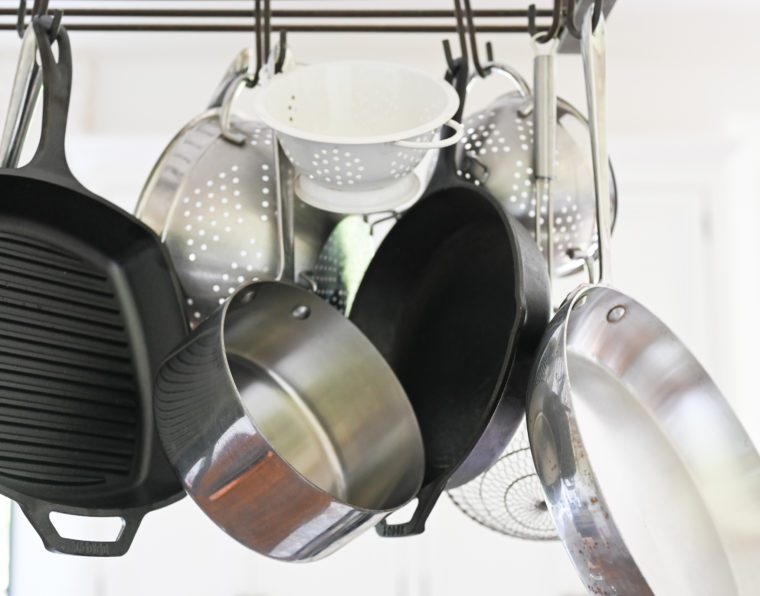
One of the most common questions I get in my inbox is: “What pots and pans do you recommend?” With so many brands, materials, sizes, and sets out there, buying new cookware can feel overwhelming. As a professional cook, I own enough cookware to stock an entire kitchen store, but in reality, I return to the same pieces again and again.
My advice? Skip the cookware sets and mix and match exactly what you need. While sets might seem like a good deal, they often include items you’ll rarely use—and you really need a variety of materials for different cooking tasks. In the long run, investing in individual pieces will give you more versatility and better value. These are the 9 essential pots and pans I recommend, whether you’re stocking your first kitchen, cooking for a large family, or downsizing to a smaller space.
Table of Contents
Stainless Steel Pans
Stainless steel pans are your everyday workhorses. They heat food evenly, handle all types of cooking, go from stove to oven, and, depending on the brand, withstand temperatures up to 600°F. Stainless steel pans are also highly durable (i.e., safe to use with sharp or metal utensils) and dishwasher-safe—plus, they last a lifetime. I’ve been using the same stainless steel pots and pans since I got married in 2001, and they are no worse for the wear. These four stainless steel pans will give you the most versatility:
Medium Stainless Steel Pan
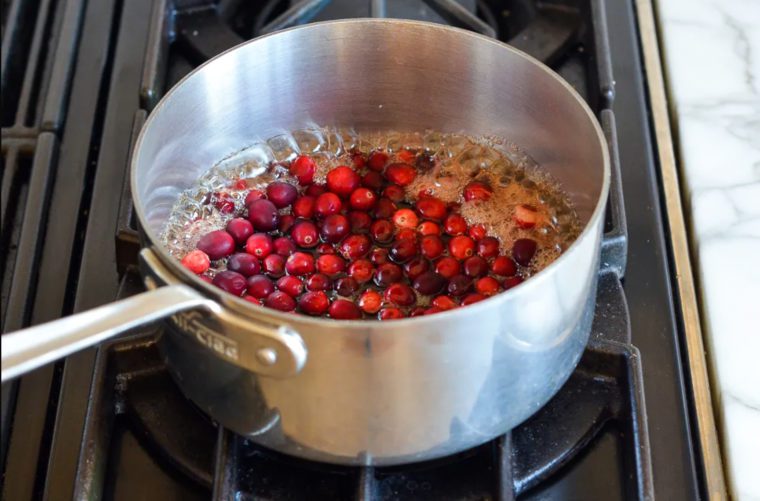
This 3-quart medium saucepan is perfect for everyday tasks like cooking rice, couscous, or other grains; making sauces, small batches of soup, puddings, and custards; boiling eggs; or reheating leftovers.
❤️ My Fave: All-Clad Stainless Steel 3-Quart Saucepan
Large Stainless Steel Skillet
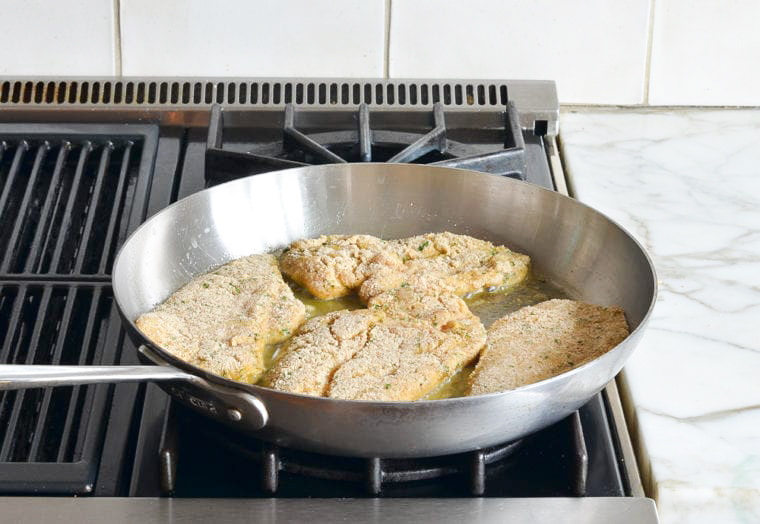
This 12-inch skillet is perfect for everyday tasks like sautéing, stir-frying, pan-searing, shallow-frying, and making pan sauces. It can also can safely go from stovetop to oven, making it ideal for recipes that require both methods. Note that this pan can often be swapped with nonstick or cast iron skillets, but nonstick should only be used when specifically required, and stainless steel is often preferable to cast iron for ease of handling.
❤️ My Fave: All-Clad 12-Inch Stainless Steel Skillet
Large Stainless Steel Stockpot
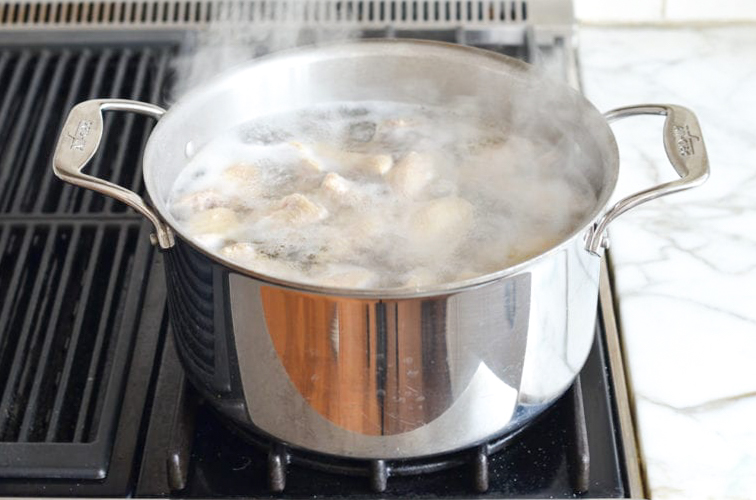
This is my go-to “big pot” that I use daily for boiling pasta (it holds up to 2 pounds), blanching vegetables, making large batches of stock, or simmering warm cocktails.
❤️ My Fave: All-Clad 8-Quart Stock Pot
Large Stainless Steel Roasting Pan
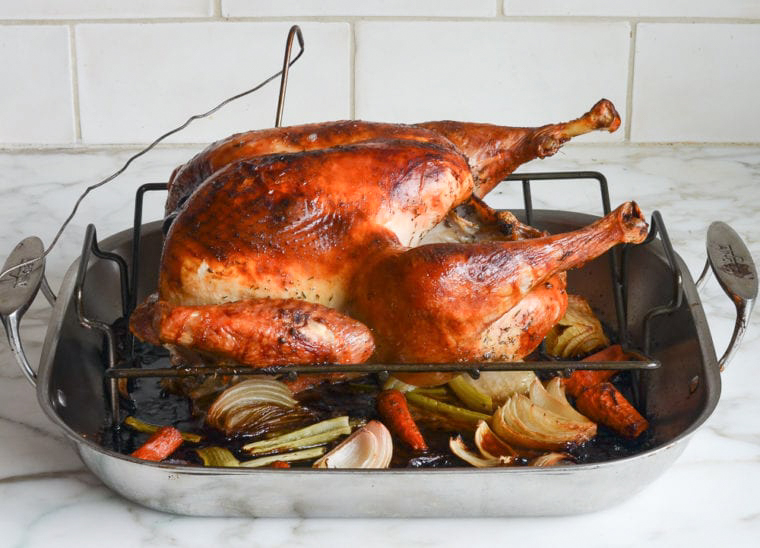
This sturdy, functional pan is perfect for roasting Thanksgiving turkeys, large cuts of meat, and whole chickens. It includes a roasting rack for even cooking, while the high sides make basting easy. Plus, it’s stovetop-safe, so you can deglaze it for quick gravies. While ideal for savory dishes, it also doubles as a water bath for custard-based desserts.
❤️ My Fave: All-Clad Large Stainless Steel Roasting Pan
Nonstick Skillets
Nonstick cookware is lined with a special coating that prevents food from sticking, making it ideal for delicate foods like omelets, fish, or anything particularly wet or cheesy. It’s also great for healthier cooking since nonstick pans require less butter or oil to prevent sticking.
In the past, there were concerns about health risks from nonstick coatings. Today, manufacturers use safer alternatives, and any chemicals released during cooking fall within safety standards. To maintain your nonstick pans, avoid high heat and metal utensils, which can damage the surface—opt for wood, plastic, or silicone instead. Hand wash them with dish soap and a sponge, and replace them when the coating shows wear. I recommend these two nonstick skillets for everyday cooking (usually sold as a set):
Small Nonstick Pan
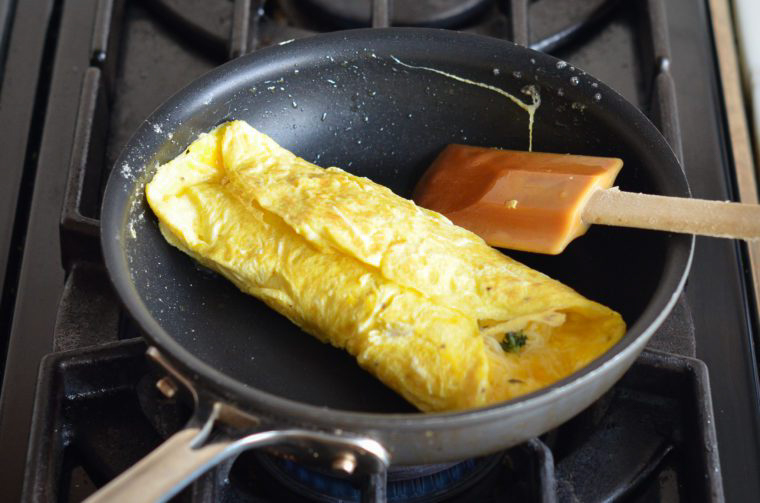
This 8-inch nonstick pan is ideal when you’re cooking delicate foods for one or two—think scrambled eggs, sunny side up eggs, or omelettes—or recipes that require cooking one at a time, like crepes.
❤️ My Fave: All-Clad 8-Inch Nonstick Pan
Medium Nonstick Pan
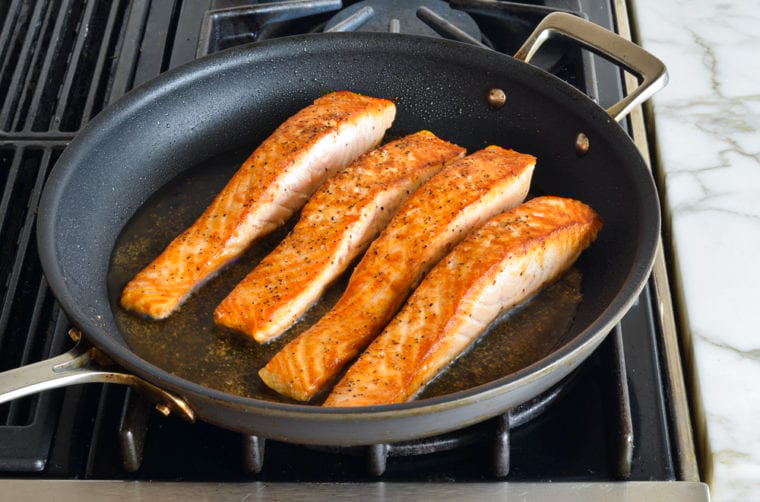
This 10-inch nonstick pan is perfect for cooking larger quantities of delicate foods that tend to stick, such as fish, scrambled eggs for a crowd, quesadillas, frittatas, pancakes, bacon, or grilled cheese.
❤️ My Fave: All-Clad 10-Inch Nonstick Pan
Enameled Cast Iron Cast Iron
Dutch ovens and cast iron skillets are not as essential as your stainless steel and nonstick pans, but if your budget allows, it’s nice to have at least one of each. Not only are these pans functional but they are also heirloom-worthy.
Dutch Oven
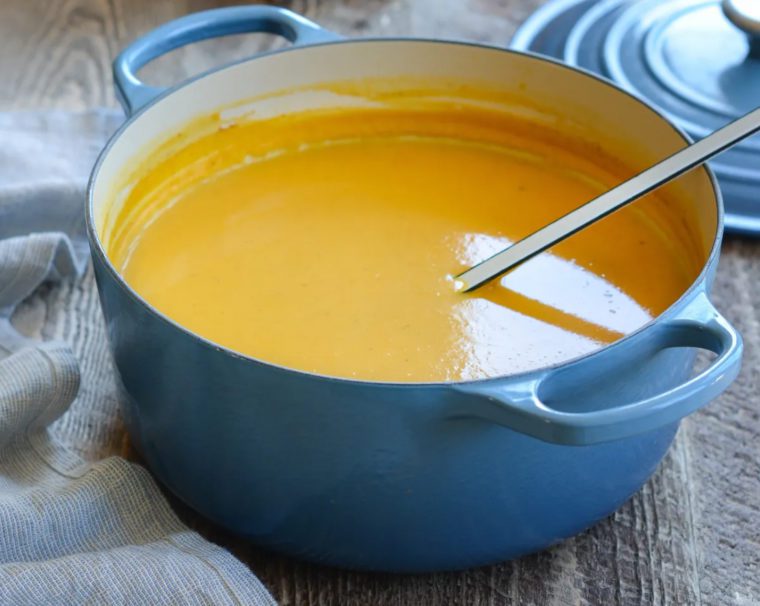
Made from enameled cast iron, Dutch ovens conduct heat beautifully, making them perfect for slow-cooking and searing followed by gentle cooking. They can go from stove to oven to table and are easy to care for—plus, they come in a variety of vibrant colors to add a little personality to your kitchen. Use them for recipes that call for a heavy-bottomed pot, such as beef stew, braised short ribs, coq au vin, chili, or risotto.
❤️ My Fave: Le Creuset 5.5 Quart Dutch Oven
Cast Iron Skillet
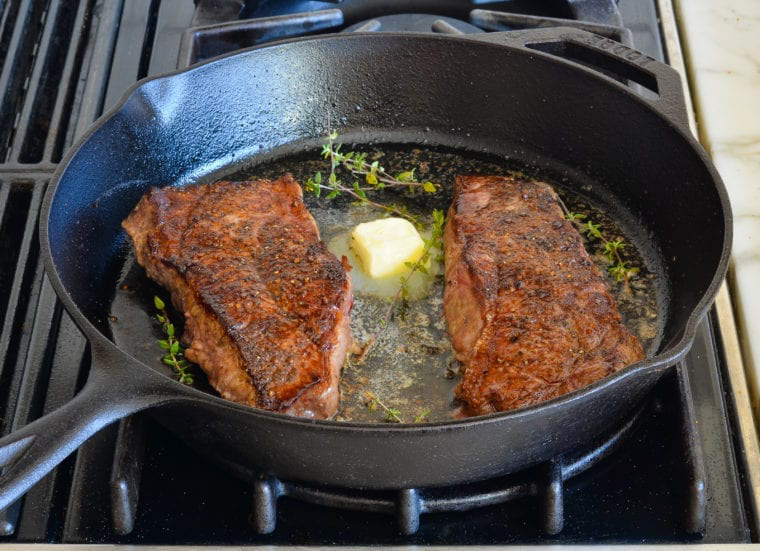
There’s a reason these old-school skillets have been around forever. They actually improve as they age (and if you care for them correctly, they last a lifetime). Cast iron pans are ideal for searing, sautéing, and even baking. They’re affordable, develop a natural nonstick surface, and can be used on the stove, in the oven, or even on the grill. Use your cast iron skillet for searing steaks or scallops, making smash burgers, or baking cornbread, soda bread, and skillet cookies.
❤️ My Fave: Lodge 10-Inch Cast Iron Skillet
Cast Iron Grill Pan
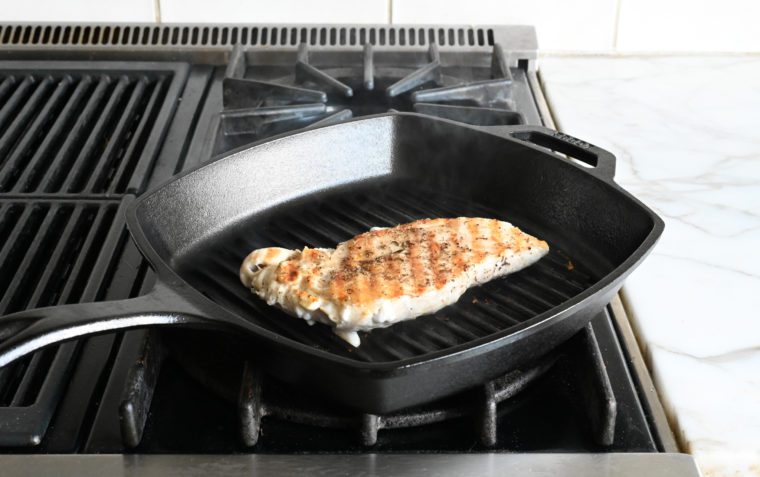
If you’re craving grilled food but don’t own a grill—or it’s too cold to fire it up—a cast iron grill pan is a great alternative. It’s nonstick, cooks evenly, and can withstand high heat. The ridges mimic grill grates, giving you those desirable grill marks. Use it for indoor grilling of steaks, burgers, chicken, shrimp, veggies, and even stone fruits.
❤️ My Fave: Lodge Cast Iron Grill Pan
Final Thoughts
Keep in mind that you don’t need to run out and buy all of these pots and pans at once! Start by purchasing one or two based on your cooking needs or the items in your kitchen that are in need of a refresh. I think you’ll find that cooking will be easier and you’ll get better results with the right tools. If you have any questions about which options may be good to start with, feel free to email me at jennifer@onceuponachef.com. Happy Cooking!

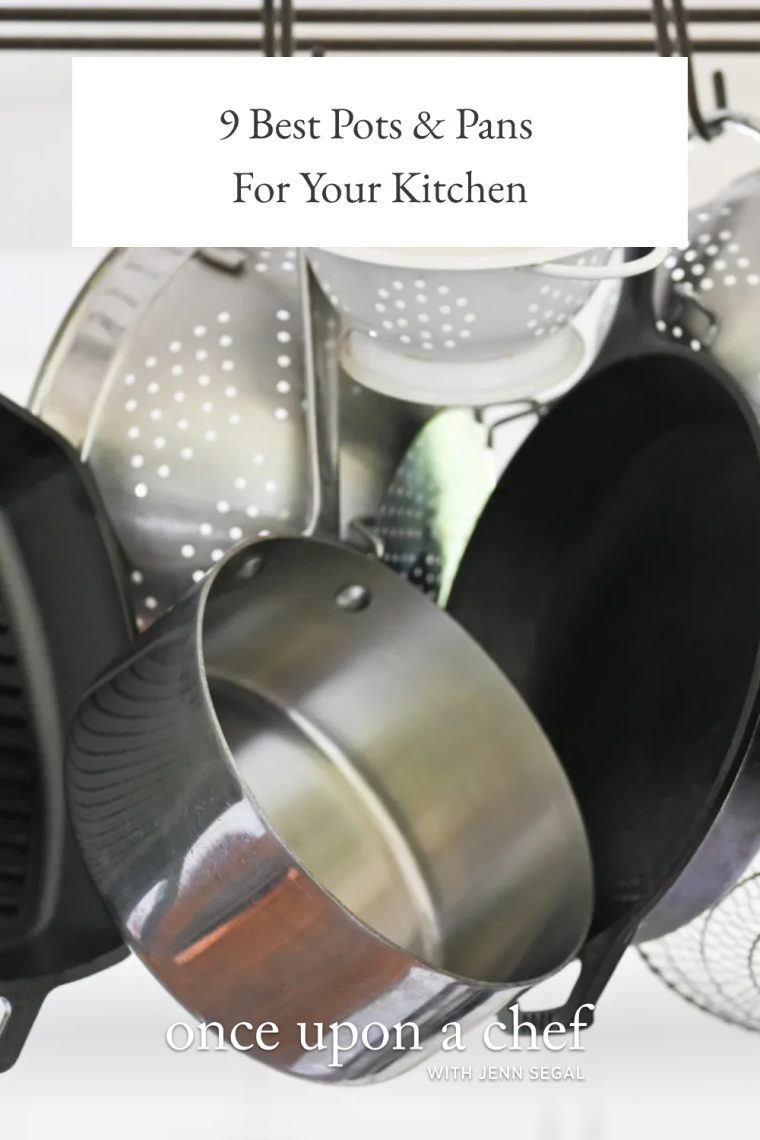
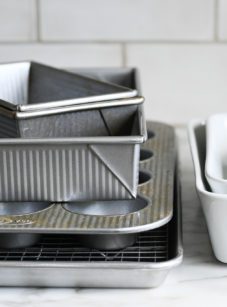
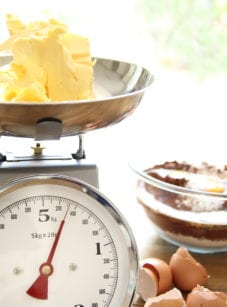
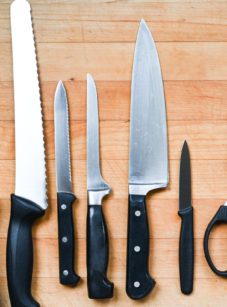
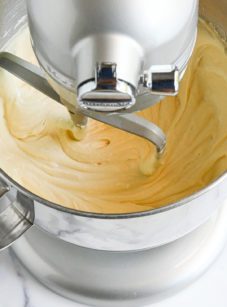
Hi Jenn –
Thank you for this informative article grounded in your experience as a chef. One note I may add, while you don’t specifically call out a lid for the large skillet, I’ve found it useful to have one. I have one for my All-Clad, and I have a Woll large skillet with a glass lid so I can see how foods are progressing without lifting the lid. As with the All-Clad, it goes from stovetop to oven. It has been invaluable for dishes such as skillet baked ziti (mostly cooked on the stove with the lid on, and finished topped with mozzarella in the hot oven without the lid); or veggies like broccoli and bok choy where the stalks are sautéed to crisp tender then the more delicate leaves/florets are thrown in and steamed with the lid on.
Love your recipes!
Would you elaborate why you seem to discourage the use of nonstick cookware.
Hi Lou, Nonstick cookware is not as durable as stainless steel or cast iron, and it doesn’t brown foods as nicely. Because it needs to be replaced as soon as it gets worn (for me this is every 1-2 years), it’s best to limit usage.
The LeCreuset is obviously a great Dutch Oven. But I bought a Tramontina Dutch Oven which I love and use it a lot. And it’s considerably less expensive. It has held up well after extensive use. Also for nonstick skillets I have several Analon Nouvelle Copper skillets that are great!
We have all but the grill pan- will do.
My wife will say – “Don’t you already have one”!!!!!
I love my deep skillet pan, think it’s a sauté pan. I like adding liquid so I need more space then a frying pan. It’s also light enough so I can fry in stages and tip over to a plate and then add everything back.
Thanks so much for this – really clear what to look for and when to use each type of pot/pan. I thought a pan was a pan, but now understand why I’m not getting the results I was looking for – I’ve been using the wrong type of pan. Im off to get myself a cast iron pan and a Dutch oven. Thanks Jenn! 🙂
Can’t live without my dutch oven, I use it practically every day. Revere Ware. It is essential in MY kitchen!! Thanks for the great read, love your recipes too!!
Jenn,
Your email came at just the right time. I am looking to replace several essential pots and pans. Thank you for the practical information. I noticed that your suggestions for the All-Clad pots through Amazon are Tri-Ply bonded (D3). Why did you choose All-Clad Tri-Ply D3 bonded pots instead of All-Clad D5?
I have made many of your wonderful recipes. Our family absolutely enjoys the delicious meals. Thank you for sharing your culinary experience and talent which make my meals fantastic!
Hi Carolyn, They are really very similar and the D3 is less expensive. The D3 is what I generally use and I’m very happy it. You can read about the differences in more detail here. So glad you enjoy the recipes! 😊
any thoughts on ceramic nonstick as being safer? Thanks
Hi N, from what I’ve read, traditional nonstick pans are just as safe as ceramic pans. This article summarizes it nicely. 🙂
Jenn,
First of all I LOVE all your recipes – easy to follow and I like all the pictures. I haven’t had one that I don’t like and many I have made over and over. My family and friends all use your recipes!
Thank you for this article on pots and pans. I’ve always wondered what brand, type to purchase. And I am in need of new ones, as my last stockpot handles melted when I was boiling water, not a pleasant smell. As I was looking over the pots and pans, I noticed some were D3(tri-ply) and some were 5 ply. Do you have a recommendation for which to purchase?
Thank you again for your wonderful recipes and this article,
Stephanie